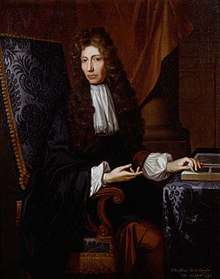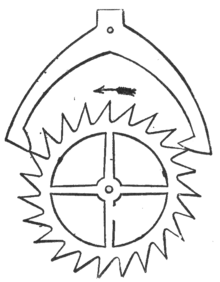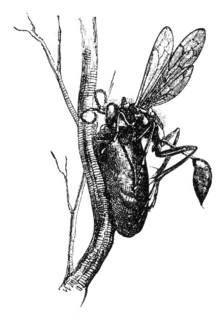Robert Hooke
| Robert Hooke | |
|---|---|
|
| |
| Born |
28 July [O.S. 18 July] 1635 Freshwater, Isle of Wight, England |
| Died |
3 March 1703 (aged 67) London, England |
| Nationality | English |
| Alma mater | Wadham College, Oxford |
| Known for |
Hooke's law Microscopy Coining the word 'cell' |
| Scientific career | |
| Fields | Physics and chemistry |
| Institutions | Oxford University |
| Academic advisors | Robert Boyle |
| Influences | Richard Busby |
Robert Hooke FRS (/hʊk/; 28 July [O.S. 18 July] 1635 – 3 March 1703) was an English natural philosopher, architect and polymath.
His adult life comprised three distinct periods: as a scientific inquirer lacking money; achieving great wealth and standing through his reputation for hard work and scrupulous honesty following the great fire of 1666, and eventually becoming ill and party to jealous intellectual disputes (the last may have contributed to his relative historical obscurity).
At one time he was simultaneously the curator of experiments of the Royal Society, a member of its council, Gresham Professor of Geometry, and Surveyor to the City of London after the Great Fire of London (in which capacity he appears to have performed more than half of all the surveys after the fire). He was also an important architect of his time – though few of his buildings now survive and some of those are generally misattributed – and was instrumental in devising a set of planning controls for London whose influence remains today. Allan Chapman has characterised him as "England's Leonardo".[1]
Robert Gunther's Early Science in Oxford, a history of science in Oxford during the Protectorate, Restoration and Age of Enlightenment, devotes five of its fourteen volumes to Hooke.
Hooke studied at Wadham College, Oxford during the Protectorate where he became one of a tightly knit group of ardent Royalists led by John Wilkins. Here he was employed as an assistant to Thomas Willis and to Robert Boyle, for whom he built the vacuum pumps used in Boyle's gas law experiments. He built some of the earliest Gregorian telescopes and observed the rotations of Mars and Jupiter. In 1665 he inspired the use of microscopes for scientific exploration with his book, Micrographia. Based on his microscopic observations of fossils, Hooke was an early proponent of biological evolution.[2][3] He investigated the phenomenon of refraction, deducing the wave theory of light, and was the first to suggest that matter expands when heated and that air is made of small particles separated by relatively large distances. He performed pioneering work in the field of surveying and map-making and was involved in the work that led to the first modern plan-form map, though his plan for London on a grid system was rejected in favour of rebuilding along the existing routes. He also came near to an experimental proof that gravity follows an inverse square law, and hypothesised that such a relation governs the motions of the planets, an idea which was independently developed by Isaac Newton.[4] Much of Hooke's scientific work was conducted in his capacity as curator of experiments of the Royal Society, a post he held from 1662, or as part of the household of Robert Boyle.
Life and works
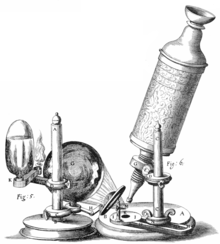
Much of what is known of Hooke's early life comes from an autobiography that he commenced in 1696 but never completed. Richard Waller mentions it in his introduction to The Posthumous Works of Robert Hooke, M.D. S.R.S., printed in 1705. In the chapter Of Dr. Dee's Book of Spirits, Hooke argues that John Dee made use of Trithemian steganography, to conceal his communication with Queen Elizabeth I.[5] The work of Waller, along with John Ward's Lives of the Gresham Professors (with a list of his major works)[6] and John Aubrey's Brief Lives, form the major near-contemporaneous biographical accounts of Hooke.
Early life
Robert Hooke was born in 1635 in Freshwater on the Isle of Wight to John Hooke and Cecily Gyles. Robert was the last of four children, two boys and two girls, and there was an age difference of seven years between him and the next youngest.[7] Their father John was a Church of England priest, the curate of Freshwater's Church of All Saints,[8] and his two brothers (Robert's uncles) were also ministers. Robert Hooke was expected to succeed in his education and join the Church. John Hooke also was in charge of a local school, and so was able to teach Robert, at least partly at home perhaps due to the boy's frail health. He was a Royalist and almost certainly a member of a group who went to pay their respects to Charles I when he escaped to the Isle of Wight. Robert, too, grew up to be a staunch monarchist.
As a youth, Robert Hooke was fascinated by observation, mechanical works, and drawing, interests that he would pursue in various ways throughout his life. He dismantled a brass clock and built a wooden replica that, by all accounts, worked "well enough", and he learned to draw, making his own materials from coal, chalk and ruddle (iron ore).
On his father's death in 1648, Robert was left a sum of forty pounds[7][9] that enabled him to buy an apprenticeship; with his poor health throughout his life but evident mechanical facility his father had it in mind that he might become a watchmaker or limner (a decorator of illuminated manuscripts), though Hooke was also interested in painting. Hooke was an apt student, so although he went to London to take up an apprenticeship, and studied briefly with Samuel Cowper and Peter Lely, he was soon able to enter Westminster School in London, under Dr. Richard Busby. Hooke quickly mastered Latin and Greek,[9] made some study of Hebrew, and mastered Euclid's Elements.[9] Here, too, he embarked on his lifelong study of mechanics.
It appears that Hooke was one of a group of students whom Busby educated in parallel to the main work of the school. Contemporary accounts say he was "not much seen" in the school, and this appears to be true of others in a similar position. Busby, an ardent and outspoken Royalist (he had the school observe a fast-day on the anniversary of the King's beheading), was by all accounts trying to preserve the nascent spirit of scientific inquiry that had begun to flourish in Carolean England but which was at odds with the literal Biblical teachings of the Protectorate. To Busby and his select students the Anglican Church was a framework to support the spirit of inquiry into God's work, those who were able were destined by God to explore and study His creation, and the priesthood functioned as teachers to explain it to those who were less able. This was exemplified in the person of George Hooper, the Bishop of Bath and Wells, whom Busby described as "the best scholar, the finest gentleman and will make the completest bishop that ever was educated at Westminster School".
Oxford
In 1653, Hooke (who had also undertaken a course of twenty lessons on the organ) secured a chorister's place at Christ Church, Oxford.[10] He was employed as a "chemical assistant" to Dr Thomas Willis, for whom Hooke developed a great admiration. There he met the natural philosopher Robert Boyle, and gained employment as his assistant from about 1655 to 1662, constructing, operating, and demonstrating Boyle's "machina Boyleana" or air pump.[11] It was not until 1662 or 1663 that was awarded a Master of Arts degree.[12] In 1659 Hooke described some elements of a method of heavier-than-air flight to Wilkins, but concluded that human muscles were insufficient to the task.
Hooke himself characterised his Oxford days as the foundation of his lifelong passion for science, and the friends he made there were of paramount importance to him throughout his career, particularly Christopher Wren. Wadham was then under the guidance of John Wilkins, who had a profound impact on Hooke and those around him. Wilkins was also a Royalist, and acutely conscious of the turmoil and uncertainty of the times. There was a sense of urgency in preserving the scientific work which they perceived as being threatened by the Protectorate. Wilkins' "philosophical meetings" in his study were clearly important, though few records survive except for the experiments Boyle conducted in 1658 and published in 1660. This group went on to form the nucleus of the Royal Society. Hooke developed an air pump for Boyle's experiments based on the pump of Ralph Greatorex, which was considered, in Hooke's words, "too gross to perform any great matter."[13]
It is known that Hooke had a particularly keen eye, and was an adept mathematician, neither of which applied to Boyle. Gunther suggests that Hooke probably made the observations and may well have developed the mathematics of Boyle's law. Regardless, it is clear that Hooke was a valued assistant to Boyle and the two retained a mutual high regard.
A chance surviving copy of Willis' pioneering De anima brutorum, a gift from the author, was chosen by Hooke from Wilkins' library on his death as a memento at John Tillotson's invitation. This book is now in the Wellcome Library. The book and its inscription in Hooke's hand are a testament to the lasting influence of Wilkins and his circle on the young Hooke.
Royal Society
The Royal Society was founded in 1660, and in April 1661 the society debated a short tract on the rising of water in slender glass pipes, in which Hooke reported that the height water rose was related to the bore of the pipe (due to what is now termed capillary action). His explanation of this phenomenon was subsequently published in Micrography Observ. issue 6, in which he also explored the nature of "the fluidity of gravity". On 5 November 1661, Sir Robert Moray proposed that a Curator be appointed to furnish the society with Experiments, and this was unanimously passed with Hooke being named. His appointment was made on 12 November, with thanks recorded to Dr. Boyle for releasing him to the Society's employment.
In 1664, Sir John Cutler settled an annual gratuity of fifty pounds on the Society for the founding of a Mechanick Lecture, and the Fellows appointed Hooke to this task. On 27 June 1664 he was confirmed to the office, and on 11 January 1665 was named Curator by Office for life with an additional salary of £30 to Cutler's annuity.[14]
Hooke's role at the Royal Society was to demonstrate experiments from his own methods or at the suggestion of members. Among his earliest demonstrations were discussions of the nature of air, the implosion of glass bubbles which had been sealed with comprehensive hot air, and demonstrating that the Pabulum vitae and flammae were one and the same. He also demonstrated that a dog could be kept alive with its thorax opened, provided air was pumped in and out of its lungs, and noting the difference between venous and arterial blood. There were also experiments on the subject of gravity, the falling of objects, the weighing of bodies and measuring of barometric pressure at different heights, and pendulums up to 200 ft long (61 m).
Instruments were devised to measure a second of arc in the movement of the sun or other stars, to measure the strength of gunpowder, and in particular an engine to cut teeth for watches, much finer than could be managed by hand, an invention which was, by Hooke's death, in constant use.[15]
In 1663 and 1664, Hooke produced his microscopy observations, subsequently collated in Micrographia in 1665.
On 20 March 1664, Hooke succeeded Arthur Dacres as Gresham Professor of Geometry. Hooke received the degree of "Doctor of Physic" in December 1691.[16]
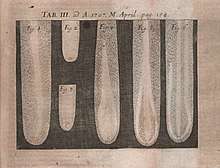
Hooke and Newcomen
There is a widely reported story that Dr Hooke corresponded with Thomas Newcomen in connection with Newcomen's invention of the steam engine. This story was discussed by Rhys Jenkins, a past President of the Newcomen Society, in 1936.[17] Jenkins traced the origin of the story to an article "Steam Engines" by Dr. John Robison (1739–1805) in the third edition of the "Encyclopædia Britannica”, which says There are to be found among Hooke's papers, in the possession of the Royal Society, some notes of observations, for the use of Newcomen, his countryman, on Papin's boasted method of transmitting to a great distance the action of an mill by means of pipes, and that Hooke had dissuaded Newcomen from erecting a machine on this principle. Jenkins points out a number of errors in Robison's article, and questions whether the correspondent might in fact have been Newton, whom Hooke is known to have corresponded with, the name being misread as Newcomen. A search by Mr. H W Dickinson of Hooke's papers held by the Royal Society, which had been bound together in the middle of the 18th century, i.e. before Robison's time, and carefully preserved since, revealed no trace of any correspondence between Hooke and Newcomen. Jenkins concluded ... this story must be omitted from the history of the steam engine, at any rate until documentary evidence is forthcoming.
In the intervening years since 1936 no such evidence has been found, but the story persists. For instance, in a book published in 2011 it is said that in a letter dated 1703 Hooke did suggest that Newcomen use condensing steam to drive the piston.[18]
Personality and disputes
Hooke was irascible, at least in later life, proud, and prone to take umbrage with intellectual competitors, though he was by all accounts also a staunch friend and ally and was loyal always to the circle of ardent Royalists with whom he had his early training at Wadham College, particularly Christopher Wren. His reputation suffered after his death and this is popularly attributed to a dispute with Isaac Newton over credit for his work on gravitation, the planets and to a lesser degree light. His dispute with Oldenburg about whether Oldenburg had leaked or passed on details of Hooke's watch escapement to others is another well-known example.
Newton, as President of the Royal Society, did much to obscure Hooke, including, it is said, destroying (or failing to preserve) the only known portrait of the man. It did not help that the first biography of Wren, Parentalia, was written by Wren's son, and tended to exaggerate Wren's work over all others. Hooke's reputation was revived during the twentieth century through studies of Robert Gunther and Margaret 'Espinasse. After a long period of relative obscurity he has now been recognised as one of the most important scientists of his age.[19]
Hooke was apt to use ciphers and guard his ideas. As curator of Experiments to the Royal Society he was responsible for demonstrating many ideas sent in to the Society, and there is evidence that he would subsequently assume some credit for these ideas. Hooke also was immensely busy and thus unable – or in some cases unwilling, pending a way of profiting from the enterprise via letters patent – to develop all of his own ideas. This was a time of immense scientific progress, and numerous ideas were developed in several places simultaneously.
None of this should distract from Hooke's inventiveness, his remarkable experimental facility, and his capacity for hard work. His ideas about gravitation, and his claim of priority for the inverse square law, are outlined below. He was granted a large number of patents for inventions and refinements in the fields of elasticity, optics, and barometry. The Royal Society's Hooke papers (recently discovered after disappearing when Newton took over) will open up a modern reassessment.
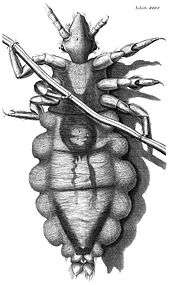
Much has been written about the unpleasant side of Hooke's personality, starting with comments by his first biographer, Richard Waller, that Hooke was "in person, but despicable" and "melancholy, mistrustful, and jealous."[15] Waller's comments influenced other writers for well over two centuries, so that a picture of Hooke as a disgruntled, selfish, anti-social curmudgeon dominates many older books and articles. For example, Arthur Berry said that Hooke "claimed credit for most of the scientific discoveries of the time."[20] Sullivan wrote that Hooke was "positively unscrupulous" and possessing an "uneasy apprehensive vanity" in dealings with Newton.[21] Manuel used the phrase "cantankerous, envious, vengeful" in his description.[22] More described Hooke having both a "cynical temperament" and a "caustic tongue."[23] Andrade was more sympathetic, but still used the adjectives "difficult", "suspicious", and "irritable" in describing Hooke.[24]
The publication of Hooke's diary in 1935[25] revealed other sides of the man that 'Espinasse, in particular, has detailed carefully. She writes that "the picture which is usually painted of Hooke as a morose and envious recluse is completely false."[26] Hooke interacted with noted craftsmen such as Thomas Tompion, the clockmaker, and Christopher Cocks (Cox), an instrument maker. Hooke often met Christopher Wren, with whom he shared many interests, and had a lasting friendship with John Aubrey. Hooke's diaries also make frequent reference to meetings at coffeehouses and taverns, and to dinners with Robert Boyle. He took tea on many occasions with his lab assistant, Harry Hunt. Within his family, Hooke took both a niece and a cousin into his home, teaching them mathematics.
Robert Hooke spent his life largely on the Isle of Wight, at Oxford, and in London. He never married, but his diary records that he had sexual relations with his niece, Grace, and several of his housekeepers. He at one point records that one of these housekeepers gave birth to a girl, but doesn't note the paternity of the child.[25] On 3 March 1703, Hooke died in London, and a chest containing £8,000 in money and gold was found in his room at Gresham College. Although he had talked of leaving a generous bequest to the Royal Society which would have given his name to a library, laboratory and lectures, no will was found and the money passed to an illiterate cousin, Elizabeth Stephens.[27] He was buried at St Helen's Bishopsgate, but the precise location of his grave is unknown.
Science

Mechanics
In 1660, Hooke discovered the law of elasticity which bears his name and which describes the linear variation of tension with extension in an elastic spring. He first described this discovery in the anagram "ceiiinosssttuv", whose solution he published in 1678[28] as "Ut tensio, sic vis" meaning "As the extension, so the force." Hooke's work on elasticity culminated, for practical purposes, in his development of the balance spring or hairspring, which for the first time enabled a portable timepiece – a watch – to keep time with reasonable accuracy. A bitter dispute between Hooke and Christiaan Huygens on the priority of this invention was to continue for centuries after the death of both; but a note dated 23 June 1670 in the Hooke Folio (see External links below), describing a demonstration of a balance-controlled watch before the Royal Society, has been held to favour Hooke's claim.[29]
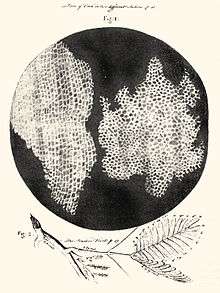
It is interesting from a twentieth-century vantage point that Hooke first announced his law of elasticity as an anagram. This was a method sometimes used by scientists, such as Hooke, Huygens, Galileo, and others, to establish priority for a discovery without revealing details.
Hooke became Curator of Experiments in 1662 to the newly founded Royal Society, and took responsibility for experiments performed at its weekly meetings. This was a position he held for over 40 years. While this position kept him in the thick of science in Britain and beyond, it also led to some heated arguments with other scientists, such as Huygens (see above) and particularly with Isaac Newton and the Royal Society's Henry Oldenburg. In 1664 Hooke also was appointed Professor of Geometry at Gresham College in London and Cutlerian Lecturer in Mechanics.[30]
On 8 July 1680, Hooke observed the nodal patterns associated with the modes of vibration of glass plates. He ran a bow along the edge of a glass plate covered with flour, and saw the nodal patterns emerge.[31][32] In acoustics, in 1681 he showed the Royal Society that musical tones could be generated from spinning brass cogs cut with teeth in particular proportions.[33]
Gravitation
While many of his contemporaries believed in the aether as a medium for transmitting attraction or repulsion between separated celestial bodies, Hooke argued for an attracting principle of gravitation in Micrographia (1665). Hooke's 1666 Royal Society lecture on gravity added two further principles: that all bodies move in straight lines till deflected by some force and that the attractive force is stronger for closer bodies.[34] Dugald Stewart quoted Hooke's own words on his system of the world.[35]
"I will explain," says Hooke, in a communication to the Royal Society in 1666, "a system of the world very different from any yet received. It is founded on the following positions. 1. That all the heavenly bodies have not only a gravitation of their parts to their own proper centre, but that they also mutually attract each other within their spheres of action. 2. That all bodies having a simple motion, will continue to move in a straight line, unless continually deflected from it by some extraneous force, causing them to describe a circle, an ellipse, or some other curve. 3. That this attraction is so much the greater as the bodies are nearer. As to the proportion in which those forces diminish by an increase of distance, I own I have not discovered it...."
Hooke's 1670 Gresham lecture explained that gravitation applied to "all celestial bodies" and added the principles that the gravitating power decreases with distance and that in the absence of any such power bodies move in straight lines.
Hooke published his ideas about the "System of the World" again in somewhat developed form in 1674, as an addition to "An Attempt to Prove the Motion of the Earth from Observations".[36] Hooke clearly postulated mutual attractions between the Sun and planets, in a way that increased with nearness to the attracting body.
Hooke's statements up to 1674 made no mention, however, that an inverse square law applies or might apply to these attractions. Hooke's gravitation was also not yet universal, though it approached universality more closely than previous hypotheses.[37] Hooke also did not provide accompanying evidence or mathematical demonstration. On these two aspects, Hooke stated in 1674: "Now what these several degrees [of gravitational attraction] are I have not yet experimentally verified" (indicating that he did not yet know what law the gravitation might follow); and as to his whole proposal: "This I only hint at present", "having my self many other things in hand which I would first compleat, and therefore cannot so well attend it" (i.e. "prosecuting this Inquiry").[36]
In November 1679, Hooke initiated a remarkable exchange of letters with Newton[38] (of which the full text is now published).[39] Hooke's ostensible purpose was to tell Newton that Hooke had been appointed to manage the Royal Society's correspondence.[40] Hooke therefore wanted to hear from members about their researches, or their views about the researches of others; and as if to whet Newton's interest, he asked what Newton thought about various matters, giving a whole list, mentioning "compounding the celestial motions of the planetts of a direct motion by the tangent and an attractive motion towards the central body", and "my hypothesis of the lawes or causes of springinesse", and then a new hypothesis from Paris about planetary motions (which Hooke described at length), and then efforts to carry out or improve national surveys, the difference of latitude between London and Cambridge, and other items. Newton's reply offered "a fansy of my own" about a terrestrial experiment (not a proposal about celestial motions) which might detect the Earth's motion, by the use of a body first suspended in air and then dropped to let it fall. The main point was to indicate how Newton thought the falling body could experimentally reveal the Earth's motion by its direction of deviation from the vertical, but he went on hypothetically to consider how its motion could continue if the solid Earth had not been in the way (on a spiral path to the centre). Hooke disagreed with Newton's idea of how the body would continue to move.[41] A short further correspondence developed, and towards the end of it Hooke, writing on 6 January 1679|80 to Newton, communicated his "supposition ... that the Attraction always is in a duplicate proportion to the Distance from the Center Reciprocall, and Consequently that the Velocity will be in a subduplicate proportion to the Attraction and Consequently as Kepler Supposes Reciprocall to the Distance."[42] (Hooke's inference about the velocity was actually incorrect)[43]
In 1686, when the first book of Newton's Principia was presented to the Royal Society, Hooke claimed that he had given Newton the "notion" of "the rule of the decrease of Gravity, being reciprocally as the squares of the distances from the Center". At the same time (according to Edmond Halley's contemporary report) Hooke agreed that "the Demonstration of the Curves generated therby" was wholly Newton's.[39]
A recent assessment about the early history of the inverse square law is that "by the late 1660s," the assumption of an "inverse proportion between gravity and the square of distance was rather common and had been advanced by a number of different people for different reasons".[44] Newton himself had shown in the 1660s that for planetary motion under a circular assumption, force in the radial direction had an inverse-square relation with distance from the center.[45] Newton, faced in May 1686 with Hooke's claim on the inverse square law, denied that Hooke was to be credited as author of the idea, giving reasons including the citation of prior work by others before Hooke.[39] Newton also firmly claimed that even if it had happened that he had first heard of the inverse square proportion from Hooke, which it had not, he would still have some rights to it in view of his mathematical developments and demonstrations, which enabled observations to be relied on as evidence of its accuracy, while Hooke, without mathematical demonstrations and evidence in favour of the supposition, could only guess (according to Newton) that it was approximately valid "at great distances from the center".[39]
On the other hand, Newton did accept and acknowledge, in all editions of the 'Principia', that Hooke (but not exclusively Hooke) had separately appreciated the inverse square law in the solar system. Newton acknowledged Wren, Hooke and Halley in this connection in the Scholium to Proposition 4 in Book 1.[46] Newton also acknowledged to Halley that his correspondence with Hooke in 1679–80 had reawakened his dormant interest in astronomical matters, but that did not mean, according to Newton, that Hooke had told Newton anything new or original: "yet am I not beholden to him for any light into that business but only for the diversion he gave me from my other studies to think on these things & for his dogmaticalness in writing as if he had found the motion in the Ellipsis, which inclined me to try it."[39]
One of the contrasts between the two men was that Newton was primarily a pioneer in mathematical analysis and its applications as well as optical experimentation, while Hooke was a creative experimenter of such great range, that it is not surprising to find that he left some of his ideas, such as those about gravitation, undeveloped. This in turn makes it understandable how in 1759, decades after the deaths of both Newton and Hooke, Alexis Clairaut, mathematical astronomer eminent in his own right in the field of gravitational studies, made his assessment after reviewing what Hooke had published on gravitation. "One must not think that this idea ... of Hooke diminishes Newton's glory", Clairaut wrote; "The example of Hooke" serves "to show what a distance there is between a truth that is glimpsed and a truth that is demonstrated".[47][48]
Horology
Hooke made tremendously important contributions to the science of timekeeping, being intimately involved in the advances of his time; the introduction of the pendulum as a better regulator for clocks, the balance spring to improve the timekeeping of watches, and the proposal that a precise timekeeper could be used to find the longitude at sea.
Anchor escapement
In 1655, according to his autobiographical notes, Hooke began to acquaint himself with astronomy, through the good offices of John Ward. Hooke applied himself to the improvement of the pendulum and in 1657 or 1658, he began to improve on pendulum mechanisms, studying the work of Giovanni Riccioli, and going on to study both gravitation and the mechanics of timekeeping.
Henry Sully, writing in Paris in 1717, described the anchor escapement as an admirable invention of which Dr. Hooke, formerly professor of geometry in Gresham College at London, was the inventor.[49] William Derham also attributes it to Hooke.[50]
Watch balance spring
Hooke recorded that he conceived of a way to determine longitude (then a critical problem for navigation), and with the help of Boyle and others he attempted to patent it. In the process, Hooke demonstrated a pocket-watch of his own devising, fitted with a coil spring attached to the arbour of the balance. Hooke's ultimate failure to secure sufficiently lucrative terms for the exploitation of this idea resulted in its being shelved, and evidently caused him to become more jealous of his inventions.
Hooke developed the balance spring independently of and at least 5 years before Christiaan Huygens,[51] who published his own work in Journal de Scavans in February 1675.
Microscopy
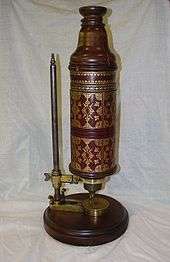
In 1665 Hooke published Micrographia, a book describing observations made with microscopes and telescopes, as well as some original work in biology. Hooke coined the term cell for describing biological organisms, the term being suggested by the resemblance of plant cells to cells of a honeycomb.[52] The hand-crafted, leather and gold-tooled microscope he used to make the observations for Micrographia, originally constructed by Christopher White in London, is on display at the National Museum of Health and Medicine in Washington, DC.
Micrographia also contains Hooke's, or perhaps Boyle and Hooke's, ideas on combustion. Hooke's experiments led him to conclude that combustion involves a substance that is mixed with air, a statement with which modern scientists would agree, but that was not understood widely, if at all, in the seventeenth century. Hooke went on to conclude that respiration also involves a specific component of the air.[53] Partington even goes so far as to claim that if "Hooke had continued his experiments on combustion it is probable that he would have discovered oxygen".[54]
Palaeontology

One of the observations in Micrographia was of fossil wood, the microscopic structure of which he compared to ordinary wood. This led him to conclude that fossilised objects like petrified wood and fossil shells, such as Ammonites, were the remains of living things that had been soaked in petrifying water laden with minerals.[55] Hooke believed that such fossils provided reliable clues to the past history of life on earth, and, despite the objections of contemporary naturalists like John Ray who found the concept of extinction theologically unacceptable, that in some cases they might represent species that had become extinct through some geological disaster.[56]
Charles Lyell wrote the following in his Principles of Geology (1832).
'The Posthumous Works of Robert Hooke M.D.,'... appeared in 1705, containing 'A Discourse of Earthquakes'... His treatise... is the most philosophical production of that age, in regard to the causes of former changes in the organic and inorganic kingdoms of nature. 'However trivial a thing,' he says, 'a rotten shell may appear to some, yet these monuments of nature are more certain tokens of antiquity than coins or medals, since the best of those may be counterfeited or made by art and design, as may also books, manuscripts, and inscriptions, as all the learned are now sufficiently satisfied has often been actually practised,' &c.; 'and though it must be granted that it is very difficult to read them and to raise a chronology out of them, and to state the intervals of the time wherein such or such catastrophes and mutations have happened, yet it is not impossible.
Astronomy
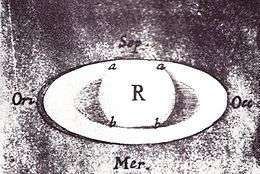
One of the more-challenging problems tackled by Hooke was the measurement of the distance to a star (other than the Sun). The star chosen was Gamma Draconis and the method to be used was parallax determination. After several months of observing, in 1669, Hooke believed that the desired result had been achieved. It is now known that Hooke's equipment was far too imprecise to allow the measurement to succeed.[57] Gamma Draconis was the same star James Bradley used in 1725 in discovering the aberration of light.
Hooke's activities in astronomy extended beyond the study of stellar distance. His Micrographia contains illustrations of the Pleiades star cluster as well as of lunar craters. He performed experiments to study how such craters might have formed.[58] Hooke also was an early observer of the rings of Saturn,[59] and discovered one of the first observed double-star systems, Gamma Arietis, in 1664.[60]
Memory
A lesser-known contribution, however one of the first of its kind, was Hooke's scientific model of human memory. Hooke in a 1682 lecture to the Royal Society proposed a mechanistic model of human memory, which would bear little resemblance to the mainly philosophical models before it.[61] This model addressed the components of encoding, memory capacity, repetition, retrieval, and forgetting – some with surprising modern accuracy.[62] This work, overlooked for nearly 200 years, shared a variety of similarities with Richard Semon's work of 1919/1923, both assuming memories were physical and located in the brain.[63][64][65] The model's more interesting points are that it (1) allows for attention and other top-down influences on encoding; (2) it uses resonance to implement parallel, cue-dependent retrieval; (3) it explains memory for recency; (4) it offers a single-system account of repetition and priming, and (5) the power law of forgetting can be derived from the model's assumption in a straightforward way.[62] This lecture would be published posthumously in 1705 as the memory model was unusually placed in a series of works on the nature of light. It has been speculated that this work saw little review as the printing was done in small batches in a post-Newtonian age of science and was most likely deemed out of date by the time it was published. Further interfering with its success was contemporary memory psychologists' rejection of immaterial souls, which Hooke invoked to some degree in regards to the processes of attention, encoding and retrieval.
Architecture
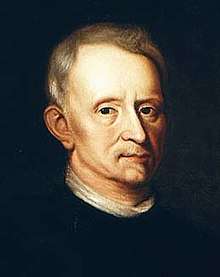
Hooke was Surveyor to the City of London and chief assistant to Christopher Wren, in which capacity he helped Wren rebuild London after the Great Fire in 1666, and also worked on the design of London's Monument to the fire, the Royal Greenwich Observatory, Montagu House in Bloomsbury, and the Bethlem Royal Hospital (which became known as 'Bedlam'). Other buildings designed by Hooke include The Royal College of Physicians (1679), Ragley Hall in Warwickshire, Ramsbury Manor in Wiltshire[66] and the parish church of St Mary Magdalene at Willen in Milton Keynes, Buckinghamshire. Hooke's collaboration with Christopher Wren also included St Paul's Cathedral, whose dome uses a method of construction conceived by Hooke. Hooke also participated in the design of the Pepys Library, which held the manuscripts of Samuel Pepys' diaries, the most frequently cited eyewitness account of the Great Fire of London.[67]
Hooke and Wren both being keen astronomers, the Monument was designed to serve a scientific function as a telescope for observing transits, though Hooke's characteristically precise measurements after completion showed that the movement of the column in the wind made it unusable for this purpose. The legacy of this can be observed in the construction of the spiral staircase, which has no central column, and in the observation chamber which remains in place below ground level.
In the reconstruction after the Great Fire, Hooke proposed redesigning London's streets on a grid pattern with wide boulevards and arteries, a pattern subsequently used in the renovation of Paris, Liverpool, and many American cities. This proposal was thwarted by arguments over property rights, as property owners were surreptitiously shifting their boundaries. Hooke was in demand to settle many of these disputes, due to his competence as a surveyor and his tact as an arbitrator.
For an extensive study of Hooke's architectural work, see the book by Cooper.[68]
Likenesses
No authenticated portrait of Robert Hooke exists. This situation has sometimes been attributed to the heated conflicts between Hooke and Newton, although Hooke's biographer Allan Chapman rejects as a myth the claims that Newton or his acolytes deliberately destroyed Hooke's portrait. German antiquarian and scholar Zacharias Conrad von Uffenbach visited the Royal Society in 1710 and his account of his visit specifically mentions him being shown the portraits of 'Boyle and Hoock' (which were said to be good likenesses), but while Boyle's portrait survives, Hooke's has evidently been lost.[69] In Hooke's time, the Royal Society met at Gresham College, but within a few months of Hooke's death Newton became the Society's president and plans were laid for a new meeting place. When the move to new quarters finally was made a few years later, in 1710, Hooke's Royal Society portrait went missing, and has yet to be found.
Two contemporary written descriptions of Hooke's appearance have survived. The first was recorded by his close friend John Aubrey, who described Hooke in middle age and at the height of his creative powers:
He is but of midling stature, something crooked, pale faced, and his face but little below, but his head is lardge, his eie full and popping, and not quick; a grey eie. He haz a delicate head of haire, browne, and of an excellent moist curle. He is and ever was temperate and modera.te in dyet, etc.
The second is a rather unflattering description of Hooke as an old man, written by Richard Waller:
As to his Person he was but despicable, being very crooked, tho' I have heard from himself, and others, that he was strait till about 16 Years of Age when he first grew awry, by frequent practising, with a Turn-Lath ... He was always very pale and lean, and laterly nothing but Skin and Bone, with a Meagre Aspect, his Eyes grey and full, with a sharp ingenious Look whilst younger; his nose but thin, of a moderate height and length; his Mouth meanly wide, and upper lip thin; his Chin sharp, and Forehead large; his Head of a middle size. He wore his own Hair of a dark Brown colour, very long and hanging neglected over his Face uncut and lank...[69]
Time magazine published a portrait, supposedly of Hooke, on 3 July 1939. However, when the source was traced by Ashley Montagu, it was found to lack a verifiable connection to Hooke. Moreover, Montagu found that two contemporary written descriptions of Hooke's appearance agreed with one another, but that neither matched the Time's portrait.[70]
In 2003, historian Lisa Jardine claimed that a recently discovered portrait was of Hooke,[71] but this claim was disproved by William Jensen of the University of Cincinnati.[72] The portrait identified by Jardine depicts the Flemish scholar Jan Baptist van Helmont.
Other possible likenesses of Hooke include the following:
- A seal used by Hooke displays an unusual profile portrait of a man's head, which some have argued portrays Hooke.
- The engraved frontispiece to the 1728 edition of Chambers' Cyclopedia shows a drawing of a bust of Robert Hooke.[73] The extent to which the drawing is based on an actual work of art is unknown.
- A memorial window[74] existed at St Helen's Bishopsgate in London, but it was a formulaic rendering, not a likeness. The window was destroyed in the 1993 Bishopsgate bombing.
In 2003 history painter Rita Greer embarked on a self-funded project to memorialise Hooke. The Rita Greer Robert Hooke project aimed to produce credible images of him, both painted and drawn, that fitted his contemporary descriptions by John Aubrey[75] and Richard Waller.[15] Greer's images of Hooke, his life and work have been used for TV programmes in UK and US, in books, magazines and for PR.[76][77][78][79][80][81][82]
Commemorations
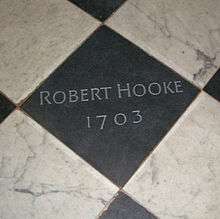
- 3514 Hooke, an asteroid (1971 UJ)[83]
- Craters on the Moon and on Mars are named in his honour.
- The Hooke Medal[84]
- Robert Hooke Science Centre, Westminster School, London
- List of new memorials to Robert Hooke 2005 – 2009
- The Boyle-Hooke plaque in Oxford
Works
- Micrographia full text at Project Gutenberg, with illustrations at Internet Archive
- Collection of Lectures: Physical, Mechanical, Geographical and Astronomical. 1679. includes An Attempt to prove the Annual Motion of the Earth, Animadversions on the Machina Coelestis of Mr. Hevelius, A Description of Helioscopes with other instruments, Mechanical Improvement of Lamps, Remarks about Comets 1677, Microscopium, Lectures on the Spring, etc.
- The Posthumous Works of Robert Hooke
- The posthumous works of Robert Hooke, M.D. S.R.S. Geom. Prof. Gresh. etc. containing his Cutlerian lectures, and other discourses, read at the meetings of the illustrious Royal Society... illustrated with sculptures. To these discourses is prefixt the author's life, giving an account of his studies and employments, with an enumeration of the many experiments, instruments, contrivances and inventions, by him made and produced as curator of experiments to the Royal Society published by Richard Waller, R.S. Secr.
See also
References
- ↑ Chapman, Alan (1996). "England's Leonardo: Robert Hooke (1635–1703) and the art of experiment in Restoration England". Proceedings of the Royal Institution of Great Britain. 67: 239–275. Archived from the original on 6 March 2011.
- ↑ Drake, Ellen Tan (2006). "Hooke's Ideas of the Terraqueous Globe and a Theory of Evolution". In Michael Cooper; Michael Hunter. Robert Hooke: Tercentennial Studies. Burlington, Vermont: Ashgate. pp. 135–149. ISBN 978-0-7546-5365-3.
- ↑ Drake, Ellen Tan (1996). Restless Genius: Robert Hooke and His Earthly Thoughts. Oxford University Press. ISBN 978-0-19-506695-1.
- ↑ Encyclopædia Britannica, 15th Edition, vol.6 p. 44
- ↑ Robert Hooke (1705). The Posthumous Works of Robert Hooke. Richard Waller, London. p. 203.
- ↑
- Ward, John (1740). The lives of the professors of Gresham college: to which is prefixed the life of the founder, Sir T. Gresham. Oxford. pp. 169–193.
- 1 2 Martin, Rob (2000). "The Tragedy of Robert Hooke's Brother". Archived from the original on 18 April 2010. Retrieved 9 March 2010.
Robert is given forty pounds, a chest and all the books
- ↑ Jardine, Lisa (2003). The Curious Life of Robert Hooke: The Man who Measured London (1st ed.). New York: Harper Collins Publishers. p. 23. ISBN 0-00-714944-1.
- 1 2 3 O'Connor, J J & Robertson, E F (August 2002). "Hooke biography". School of Mathematics and Statistics University of St Andrews, Scotland. Archived from the original on 16 July 2010. Retrieved 9 March 2010.
He was left £40 by his father, together with all his father's books (the often quoted figure of £100 is a much repeated error)
- ↑ Jardine, Lisa (2003). The Curious Life of Robert Hooke: The Man who Measured London. New York: Harper Collins Publishers. p. 65. ISBN 0-00-714944-1.
- ↑ Shapin, Steven; Schaffer, Simon (1985). "2". Leviathan and the Air-Pump: Hobbes, Boyle and the Experimental Life. Princeton: Princeton University Press. ISBN 0-691-08393-2. Retrieved 11 September 2009.
- ↑ Robert Hooke ISBN 978-0-756-53317-5 p. 98
- ↑ Fulton, John F. (1960). "The Honourable Robert Boyle, F.R.S. (1627–1692)". Notes and Records of the Royal Society of London. 15: 119–135 (123). doi:10.1098/rsnr.1960.0012.
- ↑ Sir John Cutler and Hooke were at odds in the following years over monies due to Hooke. Following Cutler's death, Hooke enlisted the aid of friends of the Cutler family, including Master of The Haberdashers Company Sir Richard Levett, for whom Hooke was involved in a building commission, to help recover the funds owed by Cutler. Jardine, Lisa (2005). The Curious Life of Robert Hooke: The Man Who Measured London. HarperCollins. pp. 244–. ISBN 978-0-06-053898-9.
- 1 2 3 Waller, Richard (1705). The Posthumous Works of Robert Hooke, M.D. S.R.S. London: Sam. Smith and Benj. Walford.
- ↑ De Milt, Clara (November 1939). "Robert Hooke, Chemist". Journal of Chemical Education. 16 (11): 503–510. Bibcode:1939JChEd..16..503D. doi:10.1021/ed016p503.
- ↑ “The Heat Engine Idea in the Seventeenth Century” Rhys Jenkins, Paper read to the Chartered Institute of Patent Agents, 21 October 1936.
- ↑ Rosen, William (2012). The Most Powerful Idea in the World: A Story of Steam, Industry and Invention. University of Chicago Press. pp. 74, 331. ISBN 978-0226726342.
- ↑ See, for example, the 2003 Hooke meeting at the University of Oxford: "Robert Hooke Day at Christ Church, Oxford". Retrieved 23 January 2009.
- ↑ Berry, Arthur (1898). A Short History of Astronomy. London: John Murray. p. 221. - See also the reprint published by Dover in 1961
- ↑ Sullivan, J. W. N. (1938). Isaac Newton 1642–1727. New York: Macmillan. pp. 35–37.
- ↑ Manuel, Frank E. (1968). A Portrait of Isaac Newton. Cambridge, Massachusetts: Harvard University Press. p. 138.
- ↑ More, Louis Trenchard (1934). Isaac Newton. New York: Charles Schribner's Sons. pp. 94–95.
- ↑ Andrarde, E. N. De C. (1950). Isaac Newton. New York: Chanticleer Press. pp. 56–57.
- 1 2 Hooke, Robert (1935). Robinson, H. W.; Adams, W., eds. The Diary of Robert Hooke, M.A., M.D., F.R.S., 1672–1680. London: Taylor & Francis.
- ↑ 'Espinasse, Margaret (1956). Robert Hooke. London: William Heinemann Ltd. p. 106.
- ↑ Inwood 2002, pp. 1,2.
- ↑ Robert Hooke, De Potentia Restitutiva, or of Spring. Explaining the Power of Springing Bodies, London, 1678.
- ↑ "Hooke Folio Online". Webapps.qmul.ac.uk. Archived from the original on 18 July 2012. Retrieved 10 September 2012.
- ↑ 'Espinasse, Margaret (1956). Robert Hooke. London: William Heinemann Ltd. p. 187.
- ↑ Ernst Florens Friedrich Chladni Archived 14 May 2011 at the Wayback Machine., Institute for Learning Technologies Archived 11 November 2007 at the Wayback Machine., Columbia University
- ↑ Oxford Dictionary of Scientists, Oxford University Press, 1999, p. 101, ISBN 7810802259.
- ↑ Clive Greated. "Robert Hooke". In Deane L. Root. Grove Music Online. Oxford Music Online. Oxford University Press. (subscription required)
- ↑ Thomas Birch, The History of the Royal Society of London, … (London, England: 1756), vol. 2, pages 68–73; see especially pages 70–72.
- ↑ Stewart, Dugald (1877) Elements of the Philosophy of the Human Mind, T. & T. Clark, Vol. 2, Ch. 2, Section 4.2 (pp. 304 ff.)
- 1 2 Hooke's 1674 statement in "An Attempt to Prove the Motion of the Earth from Observations", is available in online facsimile here.
- ↑ Wilson, p. 239
- ↑ Iliffe, Rob (2007). Newton:A Very Short Introduction. Oxford University Press. pp. 140–. ISBN 978-0-19-157902-8.
- 1 2 3 4 5 Turnbull, H W (ed.) (1960), Correspondence of Isaac Newton, Vol. 2 (1676–1687), Cambridge University Press, giving the Hooke-Newton correspondence (of November 1679 to January 1679/80) at pp. 297–314, and the 1686 correspondence over Hooke's priority claim at pp. 431–448.
- ↑ Turnbull, H W (ed.) (1960), Correspondence of Isaac Newton, Vol. 2 (1676–1687), Cambridge University Press, p. 297.
- ↑ Several commentators have followed Hooke in calling Newton's spiral path mistaken, or even a 'blunder', but there are also the facts: (a) that Hooke left out of account Newton's specific statement that the motion resulted from dropping "a heavy body suspended in the Air" (i.e. a resisting medium), see Newton to Hooke, 28 November 1679, document #236 at p. 301, 'Correspondence' vol. 2 cited above, and compare Hooke's report to the Royal Society on 11 December 1679 where Hooke reported the matter "supposing no resistance", see D Gjertsen, 'Newton Handbook' (1986), at p. 259; and (b) that Hooke's reply of 9 December 1679 to Newton considered the cases of motion both with and without air resistance: The resistance-free path was what Hooke called an 'elliptueid'; but a line in Hooke's diagram showing the path for his case of air resistance was, though elongated, also another inward-spiralling path ending at the Earth's centre: Hooke wrote "where the Medium ... has a power of impeding and destroying its motion the curve in wch it would move would be some what like the Line AIKLMNOP &c and ... would terminate in the center C". Hooke's path including air resistance was therefore to this extent like Newton's (see 'Correspondence' vol.2, cited above, at pp. 304–306, document #237, with accompanying figure). The diagrams are also online: see Wilson, p. 241, showing Newton's 1679 diagram with spiral, and extract of his letter; also Wilson, p. 242 showing Hooke's 1679 diagram including two paths, closed curve and spiral. Newton pointed out in his later correspondence over the priority claim that the descent in a spiral "is true in a resisting medium such as our air is", see 'Correspondence', vol. 2 cited above, at p. 433, document #286.
- ↑ See p. 309 in 'Correspondence of Isaac Newton', Vol. 2 cited above, at document #239.
- ↑ Wilson, p. 244.
- ↑ Gal, Ofer (2002) Meanest foundations and nobler superstructures: Hooke, Newton and the 'Compounding of the Celestiall Motions of the Planetts, Springer, p. 9, ISBN 1402007329.
- ↑ Whiteside, D T (1991). "The pre-history of the 'Principia' from 1664 to 1686". Notes and Records of the Royal Society of London. 45: 11–61 (13–20). doi:10.1098/rsnr.1991.0002. JSTOR 531520.
- ↑ See for example the 1729 English translation of the 'Principia', p. 66.
- ↑ The second extract is quoted and translated in W.W. Rouse Ball, "An Essay on Newton's 'Principia'" (London and New York: Macmillan, 1893), at p. 69.
- ↑ The original statements by Clairaut (in French) are found (with orthography here as in the original) in "Explication abregée du systême du monde, et explication des principaux phénomenes astronomiques tirée des Principes de M. Newton" (1759), at Introduction (section IX), p. 6: "Il ne faut pas croire que cette idée ... de Hook diminue la gloire de M. Newton", [and] "L'exemple de Hook" [serves] "à faire voir quelle distance il y a entre une vérité entrevue & une vérité démontrée".
- ↑ Sully, H and Le Roy, J (1737) Regle artificielle des tems, G. Dupuis, Paris, ch. 1, p. 14
- ↑ Derham, William (1734) The artificial clock maker, James, John and Paul Knapton. at the Crown, in Ludgate Street., p. 97.
- ↑ Ian Sample, "Eureka! Lost manuscript found in cupboard", The Guardian, 9 February 2006
- ↑ Hooke, Robert (1665). Micrographia: Or Some Physiological Descriptions of Minute Bodies Made by Magnifying Glasses, with Observations and Inquiries Thereupon. Courier Dover Publications. p. 113. ISBN 0486495647. Retrieved 22 July 2014.
- ↑ See particularly Observation 16 of Micrographia.
- ↑ Partington, J. P. (1951). A Short History of Chemistry (2nd ed.). London: Macmillan and Company. pp. 78–80.
- ↑ Rudwick, Martin J.S. (1976). The Meaning of Fossils. The University of Chicago Press. p. 54.
- ↑ Bowler, Peter J. (1992). The Earth Encompassed. W. W. Norton. pp. 118–119.
- ↑ Hirshfeld, Alan W. (2001). Parallax, The Race to Measure the Cosmos. New York: W. H. Freeman. pp. 144–149. ISBN 0716737116.
- ↑ Ashbrook, Joseph (1984). The Astronomical Scrapbook. Cambridge, Massachusetts: Sky Publishing Corporation. pp. 240–241. ISBN 0521106044.
- ↑ Alexander, A. F. O'D. (1962). The Planet Saturn. Londin: Faber and Faber Limited. pp. 108–109.
- ↑ Aitken, Robert G. (1935). The Binary Stars. New York: McGraw-Hill. p. 1.
- ↑ Singer, B. R. (1979). "Robert Hooke on memory: Association and time perception (I)". Notes and Records of the Royal Society of London. 31 (1): 115–131. doi:10.1098/rsnr.1976.0003. JSTOR 531553. PMID 11609928.
- 1 2 Hintzman, D. L. (2003). "Robert Hooke's model of memory". Psychonomic Bulletin & Review. 10 (1): 3–14. doi:10.3758/BF03196465. PMID 12747488.
- ↑ Semon, R. (1923). Mnemic psychology (B. Duffy, Trans.). London: George Allen & Unwin. (Original work published 1919)
- ↑ Schacter, D. L. (2001). Forgotten ideas, neglected pioneers: Richard Semon and the story of memory. Philadelphia: Psychology Press/Taylor & Francis, ISBN 184169052X.
- ↑ Schacter, D. L.; Eich, J. E. & Tulving, E. (1978). "Richard Semon's theory of memory". Journal of Verbal Learning & Verbal Behavior. 17 (6): 721–743. doi:10.1016/S0022-5371(78)90443-7.
- ↑ Inwood, Stephen (28 February 2011). The Man Who Knew Too Much (Kindle Location 8290). Macmillan Publishers UK. Kindle Edition.
- ↑ Hyam, R. (1982). Magdalene Described. Sawston, Cambridgeshire, U.K.: Crampton & Sons Ltd.
- ↑ Cooper, Michael (2003). A More Beautiful City: Robert Hooke and the Rebuilding of London after the Great Fire. Sutton Publishing Ltd. ISBN 0-7509-2959-6.
- 1 2 Allan Chapman, "England's Leonardo: Robert Hooke (1635–1703) and the art of experiment in Restoration England", lecture from 'Proceedings of the Royal Institution of Great Britain', 67, 239–275 (1996), also given at Westminster School as the 1997 Sir Henry Tizard Memorial Lecture Archived 30 October 2007 at the Wayback Machine.
- ↑ Montagu, M. F. Ashley (1941). "A Spurious Portrait of Robert Hooke (1635–1703)". Isis. 33: 15–17. doi:10.1086/358521. See also 3 July 1939 issue of Time (p. 39).
- ↑ Jardine, Lisa (2003). The Curious Life of Robert Hooke. Harper Collins. pp. 15–19.
- ↑ "Source- The UC Libraries Newsletter". Libraries.uc.edu. 4 February 2011. Retrieved 10 September 2012.
- ↑ "Robert Hooke". she-philosopher.com. 17 August 2007. Retrieved 10 September 2012.
- ↑ Rod Beavon (26 March 1999). "Robert Hooke". Rod.beavon.clara.net. Archived from the original on 17 July 2012. Retrieved 10 September 2012.
- ↑ Aubrey, John (2009). Brief Lives. Boydell Press; New edition.
- ↑ Burgan, Michael (2008). Robert Hooke Natural Philosopher and Scientific Explorer. Minneapolis, Minnesota: Compass Point Books. pp. Cover, 21, 26, 45, 65, 77, 88, 96, 98–99, 101. ISBN 0756533155.
- ↑ Fekany Lee, Kimberly (2009). Cell Scientists: from Leeuwenhoek to Fuchs. Compass Point Books, Minneapolis, Minnesota. ISBN 978-0-7565-3964-1.
- ↑ Chapman, Allan (2005). England's Leonardo Robert Hooke and the Seventeenth-Century Scientific Revolution. Institute of Physics Publishing Ltd. pp. Portrait of Robert Hooke inside dust jacket and last page of plates. ISBN 0-7503-0987-3.
- ↑ "Gresham College memorial portrait of Robert Hooke". Dome, the magazine of the Friends of St. Paul's Cathedral (46): 17.
- ↑ Chapman, Allan. "Robert Hooke: the forgotten genius of physics". Interactions. Institute of Physics (April 2005).
- ↑ "Rita's portraits of Hooke sought after across UK". Petersfield Post (21 May): 13. 2008.
- ↑ "Unveiling of memorial portrait of Robert Hooke as astronomer and inventor". Openhouse. Newspaper for the staff of the Open University (421). 2009.
- ↑ (3514) Hooke In: Dictionary of Minor Planet Names. Springer. 2003. doi:10.1007/978-3-540-29925-7_3513. ISBN 978-3-540-29925-7.
- ↑ "BSCB :: The British Society for Cell Biology". www.bscb.org. Retrieved 10 September 2012.
Sources
- Wilson, Curtis (1989), Ch. 13 "The Newtonian achievement in astronomy", pp. 233–274 in Planetary astronomy from the Renaissance to the rise of astrophysics: 2A: Tycho Brahe to Newton, Cambridge University Press, ISBN 0521242541.
Further reading
- Andrade, E. N. De C. (1950). "Wilkins Lecture: Robert Hooke". Proceedings of the Royal Society of London. Series B, Biological Sciences. 137 (887): 153–187. Bibcode:1950RSPSB.137..153A. doi:10.1098/rspb.1950.0029. JSTOR 82545.
- Aubrey, John (1898). Clark, Andrew, ed. Brief Lives. Oxford: Clarendon Press. pp. 409–416.
- Bennett, Jim; Michael Cooper; Michael Hunter; Lisa Jardine (2003). London's Leonardo: The Life and Work of Robert Hooke. Oxford University Press. ISBN 0-19-852579-6.
- Chapman, Allan (2004). England's Leonardo: Robert Hooke and the Seventeenth-century Scientific Revolution. Institute of Physics Publishing. ISBN 0-7503-0987-3.
- Chapman, Allan; Kent, Paul, eds. (2005). Robert Hooke and the English Renaissance. Gravewing. ISBN 0-85244-587-3.
- Cooper, Michael (2003). 'A More Beautiful City': Robert Hooke and the Rebuilding of London after the Great Fire. Sutton Publishing Ltd. ISBN 0-7509-2959-6.
- Cooper, Michael; Michael Hunter (2006). Robert Hooke: Tercentennial Studies. Burlington, Vermont: Ashgate.
- Gunther, Robert, ed. (1923–67). Early Science in Oxford. 7. privately printed.
- Hall, A. R. (1951). "Robert Hooke and Horology". Notes and Records of the Royal Society of London. 8 (2): 167–177. doi:10.1098/rsnr.1951.0016.
- Hooke, Robert (1635–1703). Micrographia: or some physiological descriptions of minute bodies made by magnifying glasses with observations and inquiries thereupon...
- Hooke, Robert (1935). Robinson, H. W.; Adams, W., eds. The Diary of Robert Hooke, M.A., M.D., F.R.S., 1672–1680. London: Taylor & Francis.
- Inwood, Stephen (2002). The Man Who Knew Too Much. Pan. ISBN 0-330-48829-5. (Published in the US as The Forgotten Genius)
- Stevenson, Christine (February 2005). "Robert Hooke, Monuments and Memory". Art History. 28 (1): 43–73. doi:10.1111/j.0141-6790.2005.00453.x.
External links
| Wikiquote has quotations related to: Robert Hooke |
| Wikimedia Commons has media related to Robert Hooke. |
| Wikisource has the text of the 1911 Encyclopædia Britannica article Hooke, Robert. |
- UCMP – Robert Hooke (1635–1703)
- The Monument – Dr. Robert Hooke
- Robert Hooke, hosted by Westminster School
- A timeline of Hooke's life
- England's Leonardo, a lecture on Robert Hooke
- An engraved bust of Robert Hooke
- Works by Robert Hooke at Project Gutenberg
- Works by or about Robert Hooke at Internet Archive
- Works by Robert Hooke at LibriVox (public domain audiobooks)

- Works by Robert Hooke at Open Library
- Micrographia
- Hooke's Micrographia, at Project Gutenberg (downloadable collections, including searchable ASCII text and book as complete html document with images)
- Hooke's Micrographia, at Linda Hall Library
- "Robert Boyle and Robert Hooke". Archived from the original on 26 September 2007.
- Lost manuscript of Robert Hooke discovered – from The Guardian
- Manuscript bought for The Royal Society – from The Guardian
- A Panoramic Virtual Tour of Hooke's Church at Willen – by Peter Loud
- Robert Hooke's Books, a searchable database of books that belonged to or were annotated by Robert Hooke
- Exploring our archives, a blog by researchers at the Royal Society exploring Hooke's lost manuscript
- Westfall, Richard S. "Robert Hooke". Rice University (The Galileo Project). Retrieved 16 February 2008.
- Cooper, Michael (11 May 2008). "Now that the dust has settled: A view of Robert Hooke post-2003". Retrieved 22 December 2008. – A 60-minute presentation by Prof. Michael Cooper, with links to slides, audio, video, and a transcript, with references
- The posthumous works of Robert Hooke (1705) – full digital facsimile from Linda Hall Library
- Digitzed images of Micrographia housed at the University of Kentucky Libraries Special Collections Research Center
